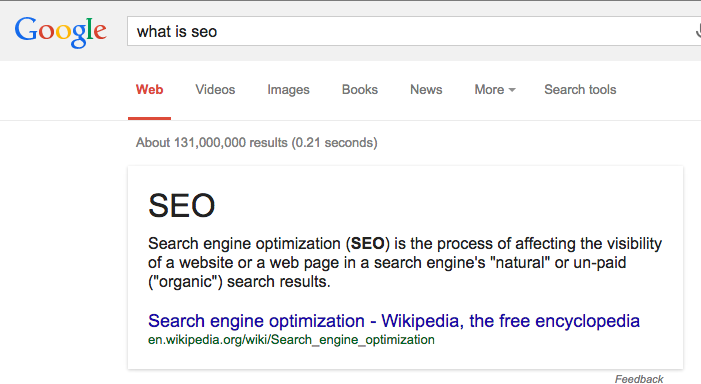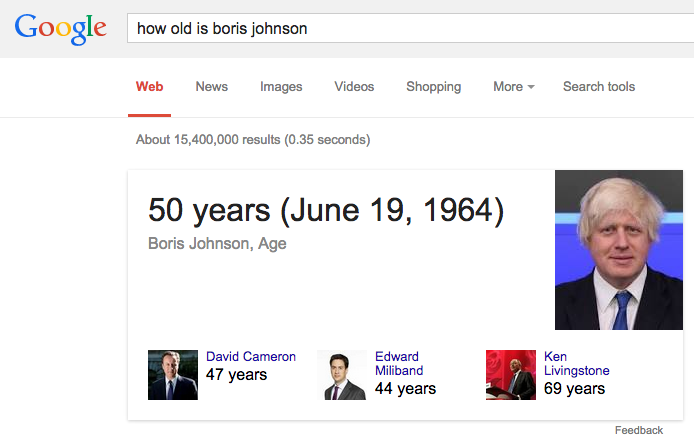Google has long been committed to increasing the quality of search for its users. None more so than the “Quick Answer” boxes that sometimes show at the top of Google Search Results. Although this is great news for users, getting what they want much quicker, it is not the best news for publishers.
For example if you run an SEO Blog and write up a very detailed explanation of what SEO is, you can miss out on traffic as Google very succinctly sums things up on their knowledge graph box at the top of the page. See below:

As you can see in this box, the above is used to show a generic definition of SEO and a link to Wikipedia for those looking to secure more information on the subject. Now this is great if your blog used as the source and will no doubt add a fair amount of traffic to your blog.
But what about other queries? Such as “How old is Boris Johnson?”. Take a look below:

As you can see, the Google Knowledge Graph box is used again and his age is displayed. What you’ll also notice is that no source is given? Why?
Well according to Google, Boris Johnson’s age is “Basic Factual Information” so doesn’t really warrant a source. But SEO is deemed as “not widely known information” so requires a source. This also occurs when “relevant snippets are shown from a website”.
There are very few exempt cases, but with Apple launching their new iPhone 6 this week, Google credited the Apple website directly after receiving certain information about the phones from their rival.
Have you seen any cases like this before?
Blog Post by: Greg McVey
